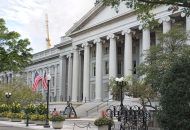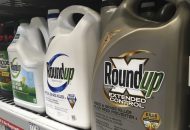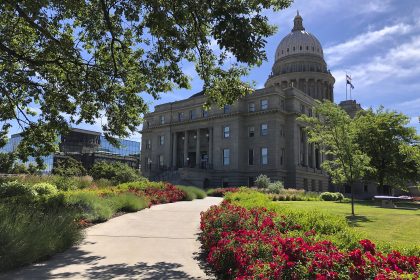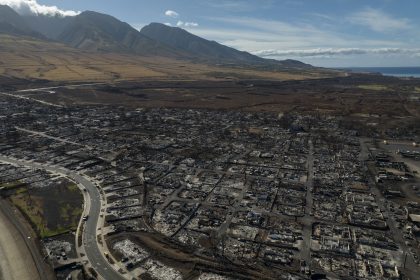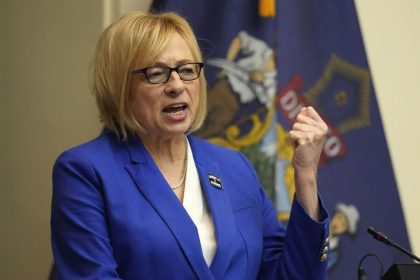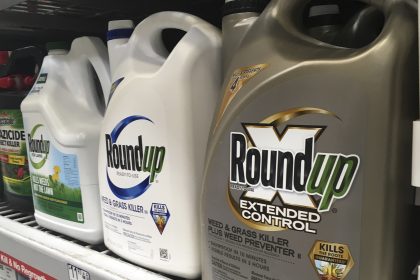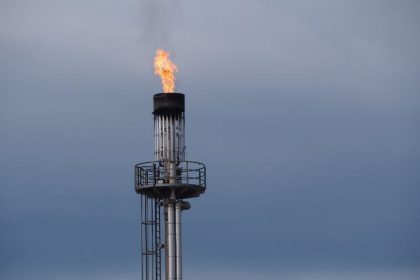Miami-Dade Is One Storm Away From a Housing Catastrophe. Nearly 1 Million People Are at Risk
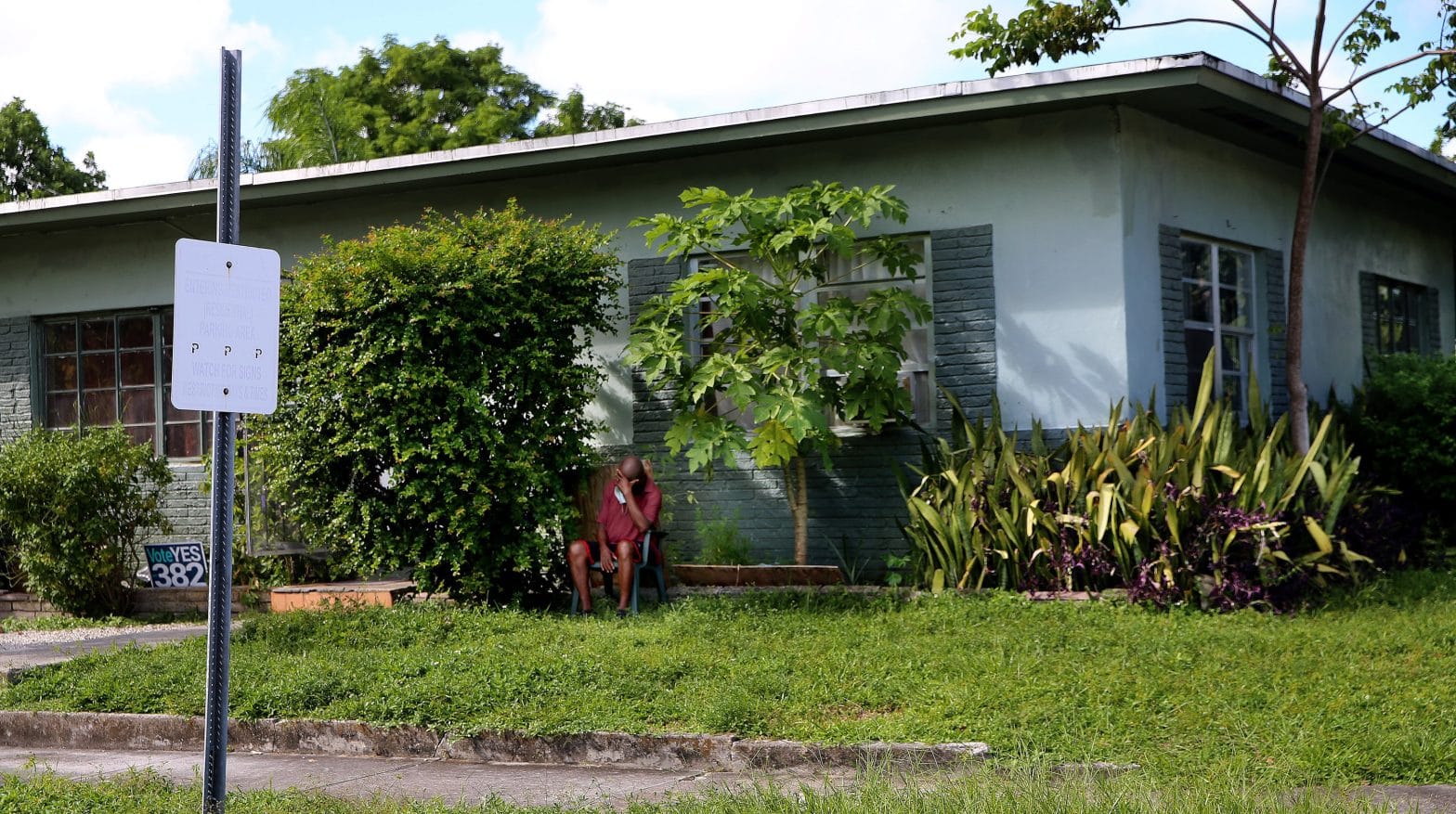
MIAMI — As the tail end of one of the most active hurricane seasons in history nears, Miami-Dade County appears once again poised to emerge unscathed. The region dodged hurricanes and tropical storms that posed a potential threat to South Florida. But what will happen when that luck runs out?
Housing advocates have long feared that the city is one storm away from disaster; nearly a third of all housing structures in Miami-Dade County built before 1990 are at risk of wind damage, mold contamination and even complete devastation from a hurricane.
According to U.S. Census Bureau figures, nearly 1 million people could be left homeless in a worst-case scenario — the majority of them among the poorest of the county’s residents.
“Hurricane Andrew cut across the state and stayed south,” said Dr. Ned Murray, associate director of FIU’s Metropolitan Center. “If Hurricane Irma had kept its projected track, which at one point had it going straight up the I-95 corridor, you’re looking at at least 258,000 properties and nearly a million people living in substandard units that would have been highly vulnerable.”
About 70.2% of the county’s total 1,016,653 single-family homes, condos and townhouses were built prior to 1990, two years before Miami-Dade and Broward adopted a stricter “High Velocity Hurricane Zone” building code standard after Hurricane Andrew. Bringing all that housing stock up to code would cost billions of dollars.
A COMMON PROBLEM
It’s a widespread issue. Miami-Dade’s housing affordability crisis extends beyond the poor to middle-class households — and so does vulnerability to a hurricane catastrophe.
More than 30% of all county renters live in storm-vulnerable housing, according to estimates. That includes townhomes, apartments, duplexes, single-family homes and public and affordable housing.
Among those at risk is Sheila McMahon, 44, who moved to Miami in 2017 to take a job at Barry University as a social work professor. She has lived in three different apartments since then. The first, in Hollywood, was in an old building that was not hurricane-proofed; luckily, she avoided a direct hit from Hurricane Irma.
Her second apartment, in Normandy Isles, seemed quaint and welcoming — until she moved in and realized that the $1,200-per-month unit’s jalousie windows didn’t fully close. She reached out to the owners, who lived in New Jersey, and they told her they couldn’t afford to replace them.
“The apartment was like a sieve,” said McMahon, who earned her Ph.D. at Rutgers University. “A friend told me ‘You’re living in Miami. If you expect to have an apartment with windows that close for less than $1,500, you’re delusional.’ But ($1,500) would have taken up half of my salary, and I have all this privilege and professional experience.
“What about single moms who have kids to take care of?” McMahon said. “How are they surviving? And how will they manage if a hurricane hits? I’m shocked this doesn’t seem to penetrate the consciousness of public officials. It just seems penny wise and pound foolish.”
Now McMahon is living in a small two-bedroom duplex in Biscayne Park with her boyfriend, where they pay $1,800 a month. The windows close properly and the unit also has hurricane shutters. But over the summer, when the neighbors next door renovated their kitchen, McMahon inherited an infestation of rats.
“The landlord said ‘too bad’ and that they felt they were already being super generous by paying for an exterminator,” McMahon said. “I’m getting ready to move to Washington, D.C., to be closer to my family during the pandemic and help out. And I’m not sure if I will move back here. There are so many wonderful things about Miami. But I’ve been a renter for 22 years, and the three that I’ve spent in Miami have been the hardest in terms of the quality and safety of the apartments.”
COSTS OF IMPROVEMENT
According to “What About Safe and Decent Housing That is Affordable?” a recent brief published by Florida International University’s Metropolitan Center, 815,721 people living in single-family homes, apartments, condos, townhomes and mobile homes are at risk of being left homeless if a major hurricane makes a direct hit on Miami-Dade County.
The vast majority of those vulnerable residents are living in dwellings built prior to 1990 that have not been upgraded to existing codes. Doing so comes with a tab of $50,000-$60,000 per unit And that figure does not include other improvements such as electrical and plumbing renovations, lead paint removal and infestation/mold removal, which would cost an additional $40,000-$50,000 per structure.
The tougher, post-Andrew South Florida Building Code was established in 1992 after that hurricane damaged or destroyed more than 125,000 and left 250,000 people homeless in southern Miami-Dade.
That code was superseded in 2002 by an even stricter Florida Building Code that has been updated every two years. The current code, which is enforced statewide, requires high-impact windows and doors capable of withstanding 150 mph winds, a “complete load path” that ties the roof, walls and foundation of the structure together; and weather- and pressure-resistant exterior walls.
“When you look at the problem from a property owner’s perspective, is it more cost-efficient to bring that property up to code, or does it even make sense to repair it?” said Nika Zyryanova, a research specialist at the Metropolitan Center who co-authored the study.
“Someone is going to have to make a determination if a property is salvageable or if it needs to be replaced,” she said. “And if you don’t have temporary housing in place to relocate people while improvements are made, you’re in an even more difficult situation. Miami-Dade doesn’t have suitable temporary housing. The problem is almost too big to get your arms around it.”
Murray said Miami-Dade County’s hurricane vulnerability can’t be compared to any other municipality in the state — even Broward or Palm Beach — because they have newer housing and fewer flooding zones.
“Economically, we would get hit harder than any other part of South Florida,” he said. “We’ve been very lucky since Andrew.”
To determine the magnitude of the issue, the Metropolitan Center used Miami-Dade Property Appraiser records and the 2018 U.S. American Community Survey performed by the U.S. Census to determine 714,444 housing units — or 70.2% of the county’s total 1,016,653 single-family homes, condos, townhouses and mobile homes — were built before 1990.
The study then broke out those units into two groups: Those with an assessed value lower than 50% of the current market value (103,498 units) and those with an assessed value lower than 80% of the current market value (172,114).
“The assessed current values of these properties provide an indication, since they were built before the Andrew building code, so they would be the most vulnerable,” Murray said.
Both groups are prone to considerable damage or even destruction from a Category 5 hurricane. According to U.S. Census data, these structures house an estimated 815,721 people.
VULNERABLE NEIGHBORHOODS
Predictably, most of the vulnerable properties are clustered within Miami-Dade’s poorest neighborhoods with the highest percentage of African-American and Hispanic residents. Those include Little Haiti, Overtown, Liberty City, Homestead, Opa-Locka, west Coconut Grove and North Miami.
“When you have old housing stock that is generally under-capitalized, hasn’t been rehabbed and is also the most affordable, it makes sense that people who have the fewest means are living there — the blackest and brownest of our population,” said Annie Lord, executive director of Miami Homes for All, a non-profit housing advocacy group.
“Then you have a COVID pandemic that is also affecting those households, especially those who earn $35,000 or less per year,” Lord said. “Once you overlay all those things, you end up with a Venn diagram that is terrifying.”
The problem is so large, even local government officials are daunted. Michael Liu, director of the Miami-Dade Public Housing and Community Development, said the redevelopment of the 9,000 public housing units the county manages is “of the highest priority” to combat the threat of natural disasters to the vulnerable stock, which on average is over 40 years old.
Funds have been designated to completely redevelop and modernize public housing to comply with current building codes; they come through the Rental Assistance Demonstration (RAD), a program funded by the U.S. Department of Housing and Urban Development (HUD). A total of $491 million has already been used on nine projects totaling more than 1,000 units, Liu said.
Another 10 projects are in the queue, representing another 4,000 new or replacement public-housing units, such as the ongoing Three Round Towers renovation and expansion in Allapattah.
“But current funding levels for public housing do not allow for significant set-asides for ‘hardening’ our properties,” Liu said. “We are only able to address basic maintenance, which is challenging since we do not receive enough in operational and capital dollars to address our annual operational costs using HUD accounting methods.”
Liu estimates that hardening existing public and affordable housing, along with facilities such as their management offices and community spaces, would cost more than $100 million.
Public housing in the city of Miami is in a similar position. Of its 6,400 units, 4,105 were built before 1990, according to the Shimberg Center for Housing Studies at the University of Florida.
And even if all older public housing were hardened, it would amount to just about 3 to 4% of all vulnerable housing.
A HEALTH CRISIS
Another threat to residents of government affordable housing: Even if a hurricane or tropical storm isn’t strong enough to cause physical damage, the wind and rain could spread the toxic mold that already permeates some of the structures.
In 2019, for example, county officials permanently moved 100 families out of the Harry Cain Tower public housing complex in downtown Miami, declaring the building’s mold and asbestos infestation so widespread as to be unsolvable.
Privately managed subsidized housing is also prone to uninhabitable conditions.
In February, the Opa-locka City Commission fined the owners of the 175-unit Cordoba Courts apartment complex $200,000 for slum-like conditions in the building, including mold, sewage and rat infestations. Shalonda Rivers, who is the president of the tenants’ association at Cordoba and is a member of the National Alliance of HUD Tenants, said the conditions persist.
“If we were to get a hurricane here now, it would be a disaster,” Rivers said. “When Irma hit us, a lot of the apartments flooded from water coming in under the doors and through the windows.”
A spokesperson for Millennia Housing Management, which owns the apartment complex, said the company has begun initial repairs on the property. The company is working to complete the preservation financing needed to rehabilitate the building through the Low-Income Housing Tax Credit program, which provides incentives to developers of affordable housing.
“Millennia expects to close on this financing in 2021, at which point the property would undergo an approximate $15 million renovation that includes significant upgrades to the interiors and exteriors of the buildings, improved amenity programming, an expanded and rehabbed community room, a wellness center, and pool enhancements,” the spokesperson said.
But experts say the county is littered with crumbling housing in desperate need of repairs.
According to Adrian Madriz, housing organizer at the non-profit Miami Workers Center, 31% of renters in Miami-Dade live in buildings or homes that are not up to code.
“This is not just a couple of units here and there,” Madriz said. “We are always talking about the relationship between health climate and housing. Constant dampness in a building is a breeding ground for disease and pestilence. Climate change and sea level rise are creating health issues caused by spores. All those things — asthma, allergies, even certain kinds of cancer — will be worse after a storm passes.”
THE MOBILE HOME SITUATION
There’s also another kind of housing to consider: trailer and mobile homes. While these form a small percentage compared with the total number of homes in Miami-Dade — 11,716 versus 678,860 — they are uniquely vulnerable to hurricanes due to their lower construction code standards.
In 1992, Hurricane Andrew’s 160 mph winds destroyed 97% of the mobile homes in its path and killed four people trying to ride out the storm inside one of the structures. The federal government, which oversees mobile home regulations, raised the requirements for new mobile homes in Florida, Hawaii and other hurricane-prone areas to withstand winds of 110 mph — a Category 2 storm.
More recently, when Hurricane Irma ripped through the Florida Keys at a Category 4 in 2017, it decimated affordable housing there. About 25% of the housing in the Keys was destroyed, according to estimates from the Federal Emergency Management Agency. That includes nearly all of the 7,500 mobile homes then in the Keys.
According to the Miami-Dade Property Appraiser, there are currently 11,415 pads (rental space for trailer homes) and 301 individual mobile homes spread out around the county. The total value of combined units is $325 million.
In Broward County, the numbers are even greater — 25,648 pads, valued at $746 million, according to the Broward County Property Appraiser.
“There’s very little affordable housing available in Broward County,” said Marty Kiar, that county’s property appraiser. “There are a lot of people who live in wonderful mobile home communities and they have a great life. But I do get concerned that there may be mobile homes that are not built up to code. It is such a dangerous place when it comes to hurricanes.”
But for most people who live in mobile homes, the choice is the only housing solution available to them.
When Maria Blanco and Pedro Freyre purchased their pink, one-bedroom trailer home 22 years ago for $25,000, it was the only option for the couple, now both 65, who wanted to live in a good location but were limited by their single-income household.
Freyre and Blanco, who is on disability following a bad fall that wrecked her back, enjoy the expansive yard and giant shade tree they share with the neighboring homes in the Honey Hill Mobile Home Park in Miami Gardens.
Their life there is peaceful — at least until hurricane season begins.
When the area is under a hurricane watch, all park residents are ordered to evacuate. Over the years the couple has stayed with relatives.
They only remember one big storm. Katrina wiped out the trailer to their right and banged up the one to their left. Their mobile home was spared except for a chunk that came off a hanging roof.
Despite the danger, though, the two are sanguine about the fact they are literally one storm away from calamitous loss.
“You’re afraid of losing everything,” said Blanco. But she’s unfazed. “If a hurricane blows it away, so be it. We’ll put up a new one.”
STEMMING THE GAP
Housing advocates argue that the preservation of existing affordable housing is critical if Miami-Dade County is ever able to meet the growing need for affordable and workforce housing.
In July, the nonprofit advocacy Miami Homes for All unveiled the Miami-Dade Affordable Housing Framework. When including COVID-19 impacts, it projected that the current shortage of 121,820 units affordable and available to households earning less than $35,000 a year will balloon to 160,460 units by 2030.
“We need to protect the affordable properties we have. If we’re looking at risk of loss, it’s not only due to the market, it’s also potentially physical loss because properties aren’t fortified,” said Sara Haas, director of the southeast market for Enterprise Community Partners, a national nonprofit focused on preserving affordable housing.
Enterprise partnered with the City of Miami this year to develop a tool that will enable property owners to audit their building for risks and vulnerabilities to several environmental factors, including wind. The tool is expected to be available by January 2021.
“We’re doing that work in recognition of the fact that not all properties are prepared, especially older properties. And when you have low-income residents living in these properties they may not have the resources to evacuate or prepare to shelter in place fully,” Haas said.
Local governments often depend on federal grants, usually from FEMA, after a hurricane hits, so they can protect public buildings from future storms or help residents harden their homes. Florida alone received $633 million this year for projects that prevent future disaster damage from the Department of Housing and Urban Development; a new FEMA grant program set to begin later this year will offer the state a shot at hundreds of millions more.
The City of Miami has budgeted up to $500,000 to help retrofit two to three of the most vulnerable public housing buildings. Miami’s Forever Bond also includes $4 million to help low-income homeowners make their houses resilient.
The county has also applied for a $2 million grant from FEMA to devise a plan to protect public housing from storms, and it has a program for low-income residents to apply for money to fix up their homes ahead of hurricane season.
Miami Beach has applied for a FEMA grant to help people elevate their homes, and sought out grants to harden the two city-owned multi-family affordable housing buildings. It won a nearly $200,000 grant for one of them, the Neptune housing project.
“Preservation is not a lucrative prospect,” Lord said. “But the public sector needs to care. We need our leaders to get together and say ‘What is it going to take to organize either a massive acquisition or preservation strategy?’
“The ecosystem of real estate isn’t just the tenant: It’s also the landlord,” Lord said. “Not protecting these buildings is only accelerating the landlord’s long game — I’m going to keep this for a while and then sell it — which leads to a further loss in housing.”
Madriz advocates for things such as rent caps, which would allow for gradual increases in rent to account for maintenance and building improvements but prevent gentrification that forces people to relocate.
“Right now we have a lot of bubbles and inflations,” he said. “That’s distorting everyone’s ability to find a place. Rent regulation would go far to keep that under control. We would have an economy here that actually matches what we’re producing instead of rich people fleeing dictatorships in South America and moving here.”
HOPING FOR THE BEST
Sharon Frazier-Stephens, who lives at a two-bedroom duplex apartment on NE 63rd Street in Little Haiti, is one of the lucky residents of one of Miami’s poorest neighborhoods who doesn’t have to worry about losing her home if a strong hurricane makes a direct strike on South Florida.
She pays $1,086 in rent for her unit, which she snapped up when she heard about the vacancy four years ago from a friend. The landlord accepted Section 8 Housing Vouchers, a federally funded program that helps people of extremely low income to live in privately owned, non-subsidized housing.
Frazier-Stephens, a personal care assistant for housebound seniors, has had trouble finding work since the COVID-19 pandemic. But she is grateful she has one less thing to worry about during hurricane season: finding a safe haven for herself and her mom whenever a storm looms.
“My mother lives in a building for the elderly that floods whenever there’s a hurricane and smells like mold,” Frazier-Stephens said. “She lives on the sixth floor and uses a walker and is very feeble. Whenever there’s a storm coming, I just bring her here.”
The windows in Frazier-Stephens’ home have impact glass and security bars. The bars are there to keep burglars away. The thick glass panes — along with the reinforced roof and upgraded air-conditioning and electrical system — are there to keep hurricanes at bay.
For her landlord, the improvements also brought big benefits, tripling the assessed value of the 1954 home from $54,000 in 2018 to $170,000 in 2019.
For now, though, many residents in vulnerable housing who can’t afford to live elsewhere are taking a hope-for-the-best attitude.
“Once we know a hurricane is imminent, we put plywood on the windows and strap down the roof with rope or whatever else we have,” said Freyre, who said he cannot afford the $200 monthly insurance on his trailer home. “The police come to evacuate you, and if you don’t have any place to go they take you to a shelter. Life always comes first. The rest is material things you can get back.
“We’ve lost things that are a lot more valuable — relatives, a mother, a father — and we’ve kept on living,” he said. “Tomorrow is always another day.”
———
Miami Herald staff writer Alex Harris contributed to this report.
———
©2020 Miami Herald
Distributed by Tribune Content Agency, LLC.










